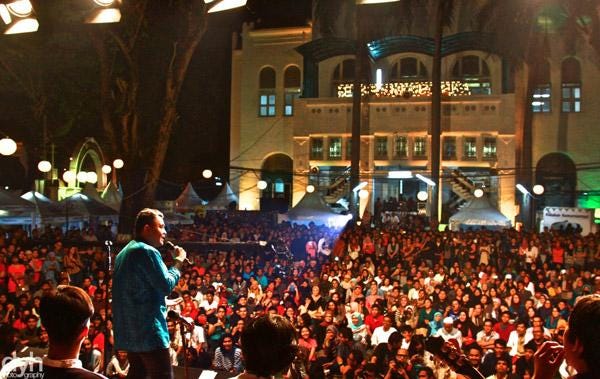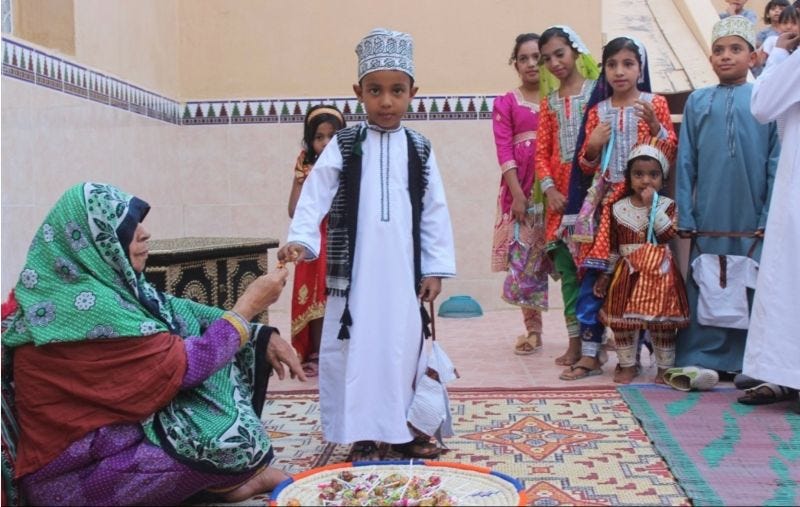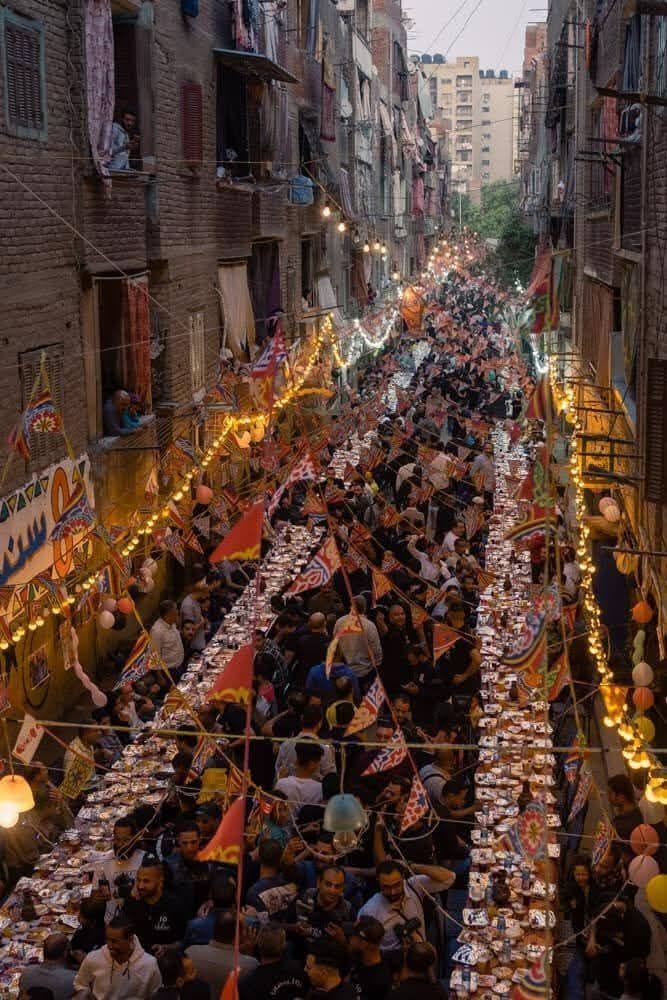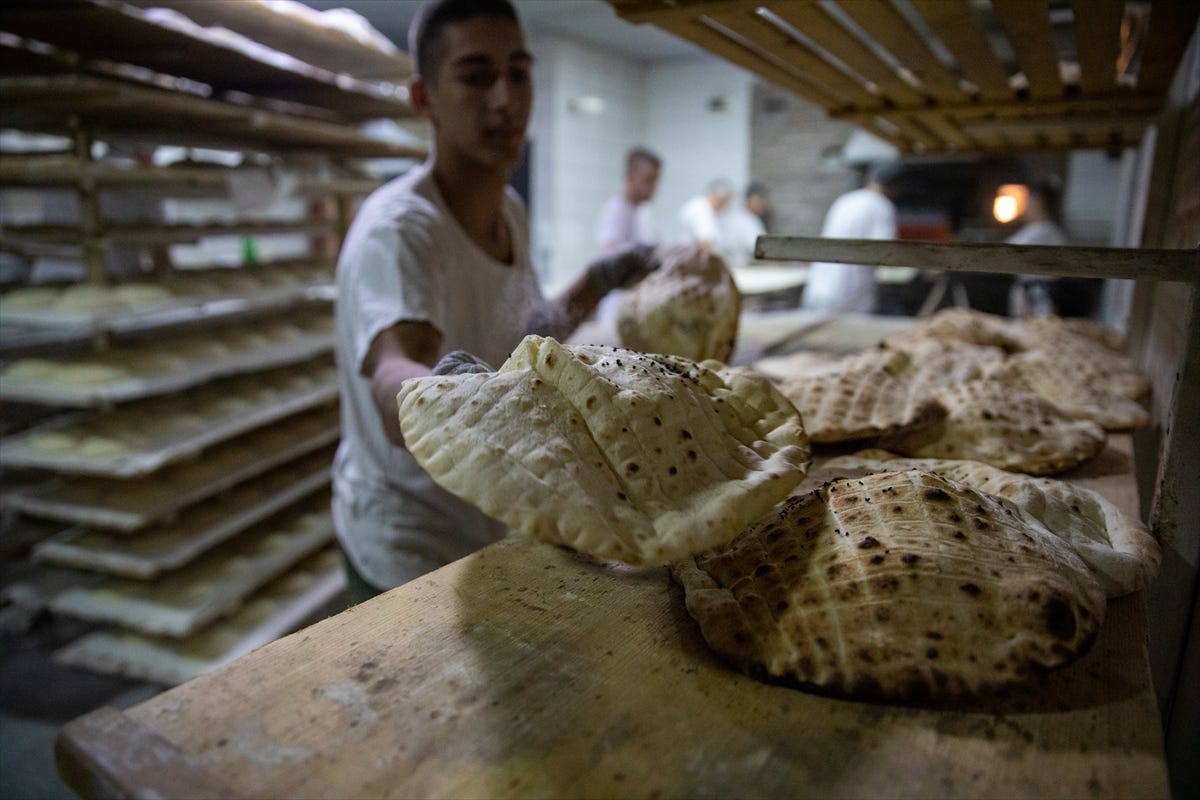I’ve had the great fortune of travelling through almost 80% of the muslim world. If Bourdain and Ibn Battuta had a love child, it would look something like me. These experiences were my education - a unique curriculum which I like to think allows me to see the world in a unique way.
My most recent post on instagram approached Ramadan via its colours. It was so refreshing to perceive the month in this way. Through colour I was able to articulate and visually show just how diverse muslims and their traditions are.
I needed to know this as a youngster from London.. who thought festivity was a Christmas thing. It’s what they did… not us. However by travelling and witnessing the unique joy millions of people imbue this month with, it gave my spirituality an added sense of purpose and meaning.
We are a joyous and colourful people, and this happiness is integral to our spirituality. Festivity made me love this month, and consequently love partaking in everything it spiritually represents.
I have travelled and seen dozens of traditions. However there’s only so much I can share in a 90 second reel, so I wanted to send some of ramadan traditions around the world I’ve been blessed to witness and partake in.
ramadan jazz festival
The Ramadan Jazz Festival is a one-of-a-kind event held in Jakarta during the holy month. At first glance, jazz and Ramadan might feel like an unusual pairing — but only the Indonesians can make it make sense. The festival is all about celebrating unity and compassion through music. Harnessing spirituality as a force to inspire creativity and music to move people.
Hosted at the Cut Meutia Mosque — yes, an actual mosque courtyard — the event brings together talented local and international jazz musicians. The performances usually start after taraweeh prayers, allowing people to reflect, connect, and enjoy art in a sacred, inclusive space.
The mosque is alive and bustling with young people. Its such a unique energy and SO much fun to witness!
war takjil
it’s not a real war — it’s playful slang Indonesians use to describe the rush or “battle” to grab takjil (sweet snacks or drinks to break the fast) from local street stalls or Ramadan markets, especially in the hour before sunset.
In cities like Jakarta, Bandung, or Yogyakarta, Ramadan bazaars pop up on street corners, and right before iftar, people flood the stalls in search of their favorite takjil — from kolak (banana in sweet coconut milk), to es buah (iced fruit cocktail), or fried treats like risoles and pastel.
It’s chaotic, colorful, and communal — a kind of joyful hustle where everyone’s just trying to snag their ideal snack before the call to prayer. You gotta come ready or you’ll get eaten alive!
al birish
In Sudan, there’s a tradition called Al Birish, named after the woven mats people lay out in the streets at sunset during Ramadan. Families place food and water on them — not just for themselves, but for anyone passing by.
It’s a quiet yet powerful act of hospitality. Neighbours, strangers, travelers — everyone is welcome to break their fast together. No one eats alone. No one is left out.
Al Birish reminds us that Ramadan isn’t just about abstaining — it’s about opening our hearts, our homes, and even our streets.
el mesaharaty
Across the muslim world (video above in Yemen), the stillness of pre-dawn Ramadan nights is often broken by a familiar rhythm — the steady beat of El Mesaharaty, the traditional Ramadan drummer.
Dating back to the early Islamic period, the Mesaharaty walks through neighborhoods just before sunrise, waking people for suhoor with a small drum and melodic chants. Some say the tradition began with Caliph Umar ibn al-Khattab, who would walk the streets himself, calling people to rise for prayer.
But over time, the role evolved into something deeply local and beloved. In many towns, the Mesaharaty would sing rhymes, call out children’s names, and turn the wake-up call into poetry. Kids would wait by windows hoping to hear their names chanted in the night. Some drummers used real drums, others just tin cans — whatever they had, it was about presence, not performance.
At the end of Ramadan, neighbors would gift the Mesaharaty food, sweets, or a few coins in appreciation. In some places, the tradition has faded, but in others, it's being revived — by young volunteers, school plays, or simply those who remember the magic of waking up to a beat that felt like home.
El Mesaharaty isn’t just about waking people — it’s about connection, rhythm, and keeping oral tradition alive, one drumbeat at a time.
Coconut Tree Crescent Moon
In Tamil Nadu, young villagers would climb huge coconut trees at sunset to be the first spot the crescent moon. Below them would be excited community members with food to celebrate the coming of the fasting month.
boeber
In Cape Town, the halfway mark of Ramadan is lovingly marked with boeber — a warm, creamy drink made with milk, vermicelli, sago, and fragrant spices like cinnamon and cardamom.
Brought by enslaved and indentured people from Southeast Asia and East Africa during colonial times, boeber became a staple of the Cape Malay Muslim community — a blend of heritage, resilience, and comfort passed down through generations.
It’s traditionally served on the 15th night of Ramadan and shared with neighbors in little bowls or cups, carrying the message: “Tonight, we drink boeber.” More than just a sweet treat, it’s a quiet celebration of survival, culture, and the beauty of being halfway there — together.
qaranqasho
In Oman, the 14th night of Ramadan brings something magical: Qaranqasho.
Children dress in traditional clothes and go door to door, singing joyful songs in exchange for sweets and treats. The air fills with laughter, music, and the rustling of candy bags — a playful reminder that Ramadan isn’t just about fasting, but also about joy, generosity, and passing down tradition.
It’s a night where culture, childhood, and community come together — and the halfway point of Ramadan feels like a celebration in itself.
sucaru koor
There’s a Wolof saying — Sucaru Koor — which means “sweetening the fast.” It’s a Ramadan tradition where people, regardless of how much they have, chip in to buy staples like sugar, rice, or grain for others.
What’s beautiful is that it’s not about rich giving to poor. It’s about everyone giving what little extra they can — a dollar, ten, whatever — to share what they have. The food goes to neighbours, youth homes, community orgs — not as charity, but as a gesture of care. A reminder that Ramadan is just as much about community as it is about fasting.
fanoos
The fanous is a decorative lantern, traditionally made of metal and colored glass, that lights up homes, streets, and mosques across Egypt during Ramadan. Today, it’s used all over the Arab world — but its roots are deeply Egyptian.
The most popular origin tale dates back to the Fatimid era in 10th-century Egypt. Legend has it that when Caliph Al-Mu'izz li-Din Allah arrived in Cairo during Ramadan, the people greeted him by lining the streets with lanterns. Children, too, joined in the celebration, carrying lanterns and singing songs as they walked with the Caliph into the city at night.
From then on, the lantern became a symbol of Ramadan joy — carried by children, hung on balconies, and placed in doorways as a sign of light, warmth, and celebration.
Even today, Egyptian children roam neighborhoods during Ramadan nights with their own little fanoos, singing traditional songs like "Wahawi ya Wahawi" — a playful chant passed down through generations. Families often buy new lanterns at the start of Ramadan, and markets come alive with colorful displays, buzzing with nostalgia.
Beyond decoration, the fanoos carries deeper meanings: light overcoming darkness, community illuminating the night, and joy made visible.
somun
In Bosnia, Ramadan evenings wouldn’t be complete without somun — a soft, round flatbread with a patterned top, baked in wood-fired ovens just before iftar. What makes it special isn’t just the taste — it’s the ritual.
Right before sunset, people queue up outside bakeries, the scent of freshly baked bread drifting into the streets. It’s warm, smoky, slightly chewy, and deeply nostalgic — a taste of Ramadan itself.
Many pair it with soups, stews, or just tear it and share. But beyond food, somun is a symbol — of togetherness, tradition, and the quiet beauty of waiting, smelling, and finally, breaking fast with something made by hand, with heart.
chaand raat
In Pakistan, India, and Bangladesh, and even south asian diaspora around the world… the final night of Ramadan is anything but quiet. It’s called Chaand Raat — “Night of the Moon” — when the crescent is spotted and Eid is announced.
Markets stay open all night. Women line up to get henna on their hands. Children pick out bangles and sweets. There’s laughter in the streets, last-minute gift buying, and a buzz in the air that only comes after a month of waiting.
It’s a night of color, community, and the kind of joy that lights up a city — all sparked by the sliver of a moon.










Thank you for writing this and sharing your experiences. The best part about this post is your ability to positively write about the Muslim world and to show the diversity in practice and culture.
I would love to go to a Ramadan jazz festival sounds so fun